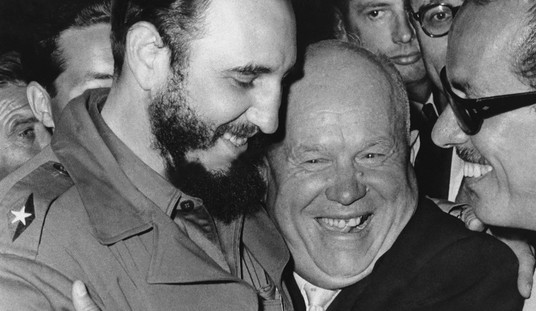ObamaCare and its exchanges finally open for business tomorrow, and the ensuing six-month enrollment period is going to mean a concerted effort from the Obama administration and its many progressive allies to persuade the young and healthy people they need to sign up for the system’s proffered insurance plans to balance out the costs of its inherently riskier insurance pools. In addition to blueish states’ individual and — er, shall we say, ‘specially tailored‘ — efforts to propagandize educate the all-important youth demographic about what the law means for them, the White House is getting some extracurricular help on making it appear that the “Affordable” Care Act is really just doing young people a massive favor.
Getting the message out to the youths, of course, means enlisting the media mediums that they frequent, often outside of the traditional political orbit, i.e. celebrities and fashion magazines, via the LA Times:
The current Cosmopolitan magazine explains the Affordable Care Act with the “Top Eight Ways Young Women Benefit from Obamacare.” Glamour lays out the “Five Things You Need to Know” about the marketplaces kicking into gear Tuesday. …
“Lots of women who will benefit may not read the New York Times or Politico but do read Cosmo,” said one administration official working on the project, who requested anonymity to discuss strategy. “Much bigger reach; reaches women exactly where they are – and they’re a key demographic.” …
Top administration officials have been talking to women’s magazines, including Woman’s Day, Cosmo Latina, Marie Claire and Ebony, several of which are running stories in their October print issues. The Planned Parenthood Federation of America has started the website Obamacare Works to take questions about how the program operates.
The White House has also been working on an extended campaign with Funny or Die, which, merely through my own experiences with friends, I would actually bet is probably one of the most effective platforms they could mobilize in terms of reaching their target audience of oh-so-hip twenty-somethings:
And who doesn’t like those cute whiteboard videos that just help make all policy discussions so much simpler?
Huh. None of it seems so bad when you put it that way, I suppose, but what I doubt we’ll be hearing from these youth-targeted PR efforts over the coming months is anything about how this entirely involuntarily program will in fact offer most young people a menu of comparatively more expensive options which they must either purchase or pay the penalty. Combined with the conspicuously bleak employment scenario that far too many of them are facing as a consequence of the Obama administration’s opportunity-crushing economy, and it actually doesn’t sound quite that cool:
27-year-olds will face rate increases as high as 279 percent
As you can see from the map above, many 27-year-olds will face steep increases in the underlying cost of individually-purchased insurance under Obamacare. For the states where we have data—the 36 reported by HHS, plus nine others that we had compiled for our map that HHS didn’t report—rates will go up for men by an average of 97 percent; for women, 55 percent. (In the few cases where HHS reported on states that our map includes, we went with HHS’ numbers.)
Worst off was Nebraska, where the difference between the cheapest plan under the old system and under Obamacare was 279 percent for men, and 227 percent for women: more than triple the old rate. Faring best was Colorado, where rates will decline for both 27-year-old men and women by 36 percent. The only other state to see a rate decline in this analysis was New Hampshire: 8 percent for both men and women. …
In the 13 states plus D.C. (which I will abbreviate as 13+DC), a 27-year-old would have to make 59 percent of the median income of his peers, or less, to come out ahead with regard to Obamacare’s subsidies. A 40-year-old would have to make less than 57 percent of the median income for his peers. …
However, the overall results make clear that most people will not receive enough in subsidies to counteract the degree to which Obamacare drives premiums upward. Remember that nearly two-thirds of the uninsured are under the age of 40. And that young and healthy people are essential to Obamacare; unless these individuals are willing to pay more for health insurance to subsidize everyone else, the exchanges will not serve the goal of providing coverage to the uninsured.









Join the conversation as a VIP Member